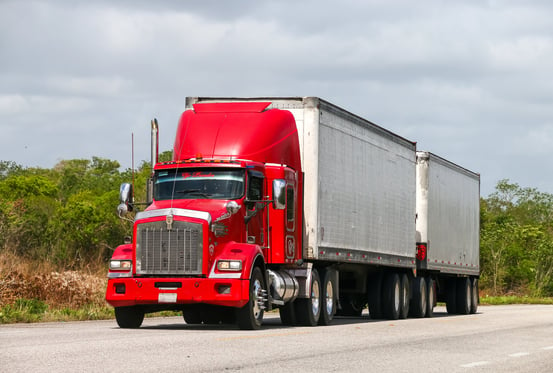REDWOOD LOGIN
Redwood PortalLTL
SCS
SCS Support
Rockfarm
 With the truck capacity crisis, shippers and e-commerce companies are looking for new means of efficient transporting. FTL simply can’t handle the demands of today’s extensive shipping market anymore. Thus, companies are moving more and more towards the LTL method of shipping in order to save cost, time, and resources amidst the truck deficiency.
With the truck capacity crisis, shippers and e-commerce companies are looking for new means of efficient transporting. FTL simply can’t handle the demands of today’s extensive shipping market anymore. Thus, companies are moving more and more towards the LTL method of shipping in order to save cost, time, and resources amidst the truck deficiency.
FTL or “full truckload” is the traditional method of shipping where a company will use an entire truck to send their goods from one location to another.
LTL or “less than truckload,” on the other hand, doesn’t use an entire truck. Rather, a company “rents” a specific area or volume on a truckload. These goods are assembled with other companies’ units. These shipments all move in the same direction through a series of hubs and spokes.
For example, five companies could each fill the same small truck with a variety of their goods. They can then send from their multiple warehouses in the California Bay area to a series of warehouses in Kansas.
If you have already used an LTL mode of transport, you likely have seen the positive effects on your business and wallet. In a capacity crisis, the LTL advantages are even more critical to continue delivering great service to your customers. Click to learn more about what a nationwide truck shortage means for your LTL shipping plan.
Generally, LTL is considered more complicated to organize than FTL. With FTL, one shipper sends one load from one location to another. With LTL, shippers have to organize a variety of shipments and locations for one truck.
However, organization doesn’t equate to efficiency. An FTL model is easier to setup, but it generally wastes a lot of gas and resources by not fully optimizing volume, space, and routes.
LTL, on the other hand, can be highly efficient. These systems ensure that trucks are always filled with goods and moving through the appropriate hubs and warehouses. Learn more about the efficient dispatching process of LTL shipments here.
E-commerce has complicated transportation. Retailers no longer send full sets of inventory from one warehouse to one storefront. Online shopping means units of inventory have to move from multiple warehouses to multiple international locations.
This disjointed routing is innately more attuned to the flexibility of LTL, which enables smaller shipments and varied location terminals.
Moreover, LTL enables shipments to arrive faster than FTL. In order to optimize an FTL system, retailers need to fill the truck to the brim with goods. Customers won’t wait around for a company’s FTL truck to get filled for this cost optimization. Customers want their goods in one or two days, if not overnight.
LTL allows for faster and more flexible transit of units to the customer’s doorstep. LTL ensures you can always deliver the best and most reliable customer service.
FTL prices have skyrocketed with the capacity crisis. High demand and low supply for trucks mean that most companies can’t afford the privilege of renting an entire truck for their own use.
Moreover, FTL is generally used by the big retail giants who can afford their own fleets of trucks. With the e-commerce boom, smaller online retailers and businesses are popping up who can’t afford FTL trucks.
LTL systems are more accessible and cost-effective for small to medium-sized businesses, especially as the cost of transport increases.
Read: How a 3PL Can Help You With The Capacity Crunch
A major cause of the capacity crisis is the high number of returns from online purchases. More e-commerce purchases mean more e-commerce returns, which is creating a unique challenge for transporters moving shipments in reverse. The 2017 holiday season saw some of the biggest seasonal returns in history, which created confusion over the organization of reverse logistics.
Full truckloads are generally not an effective solution for returns due to the high level of management and organization needed to fill an entire truckload with one company’s “returns.” Thus, LTL has stepped in to take on the critical role of streamlining the reverse logistics process.
LTL allows retailers to ship customer’s returns on a truck already moving in that direction. With an extensive network of hubs and spokes, LTL trucks are always moving in the direction your business needs—even in reverse.
LTL especially enhances the customer experience with the reverse last mile. Customers don’t have to wait long shipping periods to get their refunds on returns; LTL moves units in reverse faster and more effectively.
LTL is the most effective solution to meet the growing needs of the online consumer: speed, reliability, and price efficiency. FTL is out, and LTL is in for productivity and effectiveness.
LTL provides capacity in a time of deficiency and organization in a time of transport confusion.
If you want to be immune to the capacity crisis, it’s time to use an LTL system with a trusted, efficient 3PL like LTX Solutions.
Contact us now to be matched with LTL solutions that will efficiently and effectively transport your goods.